The Sagrada Familia stands as a testament to the genius of architect Antoni Gaudí, captivating millions with its intricate designs and grandiose scale. Despite its ongoing construction, this iconic basilica continues to inspire awe and admiration, making it a symbol of Barcelona's cultural and artistic heritage.
Often referred to as The Unfinished Enigma of Sagrada Familia: Barcelona's Architectural Marvel, this masterpiece intertwines spirituality and nature, reflecting Gaudí's unique vision. As it gradually transforms from a blueprint to reality, the Sagrada Familia invites visitors to explore its mysteries and appreciate the enduring legacy of one of history's most innovative architects.
The Architectural Significance of La Sagrada Familia in Barcelona
The architectural significance of La Sagrada Familia lies not only in its stunning aesthetics but also in its innovative engineering techniques. Gaudí's use of hyperbolic paraboloids and other complex shapes allows the structure to withstand the test of time while creating an ethereal quality. This approach demonstrates how nature and architecture can harmoniously coexist, offering a glimpse into the future of sustainable design.
Moreover, La Sagrada Familia serves as a cultural beacon that attracts architects and enthusiasts from around the world. Its intricate facades, adorned with symbolic carvings, tell biblical stories and reflect Gaudí's deep religious beliefs. Visitors can appreciate not only the beauty but also the narrative woven into its walls, making each visit a unique experience.
Incorporating elements from various architectural styles, including Gothic and Art Nouveau, La Sagrada Familia showcases a rich historical narrative. This blending of influences results in a structure that is both innovative and deeply rooted in tradition. Key architectural features include:
- Nativity Façade: Celebrates the birth of Christ with intricate sculptures.
- Passion Façade: Represents the suffering and crucifixion of Jesus.
- Glory Façade: Focuses on the resurrection and the eternal life.
The ongoing construction process itself is a remarkable aspect of La Sagrada Familia, making it a living project that evolves over time. This aspect encourages conversations about the intersection of modern technology and traditional craftsmanship, raising questions about the future of architectural practices. As the basilica approaches its completion, it continues to inspire both admiration and inquiry, solidifying its place in Barcelona's architectural landscape.
Exploring the Unfinished Design of Gaudí's Masterpiece
Exploring the unfinished design of Gaudí's masterpiece reveals a fascinating journey through creativity and innovation. The Sagrada Familia remains a work in progress, with construction continuing for over a century. This ongoing evolution not only highlights Gaudí's original vision but also invites contemporary architects to contribute to this iconic structure, blending historical integrity with modern techniques.
The incomplete nature of the Sagrada Familia raises intriguing questions about artistic intention and the role of collaborators in architectural projects. Some key aspects of its unfinished design include:
- Dynamic Collaboration: Many architects and artisans have joined the project, each bringing their own interpretations to Gaudí's original plans.
- Technological Advancements: Innovations such as 3D modeling and computer-aided design have influenced construction methods, allowing for precision in complex forms.
- Cultural Continuity: The ongoing construction serves as a bridge between generations, as each new phase reflects both respect for Gaudí’s vision and contemporary artistic trends.
As visitors wander through the basilica, they can observe areas still requiring completion, which provoke a sense of wonder and curiosity. The unfinished elements create a dialogue between the past and the present, where the spiritual journey of the Sagrada Familia invites contemplation of its broader significance in the architectural landscape.
The unfinished design of La Sagrada Familia ultimately embodies the spirit of exploration and creativity. It stands not only as a tribute to Gaudí but also as a symbol of the ever-evolving nature of art and architecture, offering a glimpse into the future while honoring its rich past. As completion approaches, this architectural marvel continues to evolve, captivating the hearts and minds of all who visit.
Cultural Symbolism: The Mystique Behind Sagrada Familia's Facades
The Sagrada Familia's facades serve as a profound reflection of cultural symbolism, intertwining faith, nature, and artistic expression. Each facade is meticulously designed to convey distinct narratives, inviting visitors to delve into the spiritual significance behind Gaudí's genius. This profound mystique is manifested in various elements, including:
- The Nativity Façade: Celebrates the wonder of birth and innocence, adorned with intricate sculptures of flora and fauna, symbolizing God's creation.
- The Passion Façade: Portrays the stark contrast of suffering and sacrifice, characterized by angular forms that evoke deep emotion and contemplation.
- The Glory Façade: Represents the divine resurrection, featuring radiant motifs that symbolize eternal life and hope.
Gaudí’s intention was to create a living testament to his faith, making the Sagrada Familia a cultural emblem that resonates with spirituality and artistic innovation. The facades are not merely decorative; they embody a theological narrative that encourages reflection on the complexities of life and the cosmos. Visitors often find themselves immersed in the stories told through these architectural marvels, creating a unique spiritual experience.
Furthermore, the use of natural forms and colors in the facades enhances their cultural symbolism, bridging the gap between the divine and the natural world. Gaudí believed that nature was the ultimate source of inspiration, which is evident in the organic shapes that dominate the basilica's design. This deep connection to nature not only highlights the beauty of creation but also aligns with modern principles of sustainability:
- Natural Light: The strategic arrangement of openings allows sunlight to dance through stained-glass windows, creating a colorful interplay of light.
- Organic Forms: Curvilinear designs mimic natural structures, promoting harmony between architecture and its surroundings.
- Symbolic Plant Life: The facades incorporate various plant motifs, representing growth, renewal, and the cycle of life.
Ultimately, the mystique behind Sagrada Familia's facades lies in their ability to evoke a sense of wonder, drawing individuals from diverse backgrounds into a shared appreciation of art, spirituality, and cultural heritage. As the basilica continues its journey towards completion, these facades will forever stand as a dynamic testament to human creativity and faith, captivating generations to come.
The Ongoing Construction: A Journey Through Time at La Sagrada Familia
The ongoing construction of La Sagrada Familia is not just a phase; it is a journey through time that reflects the evolution of architectural practices and societal values. Since its inception in 1882, this remarkable basilica has witnessed the transformation of construction techniques, from manual craftsmanship to the incorporation of digital technologies. Each stone laid is a testament to both tradition and innovation, making the basilica a living narrative of human creativity.
As the project progresses, it invokes discussions about the balance between maintaining historical integrity and embracing modern advancements. The collaborative efforts of architects, artisans, and engineers have allowed for the integration of contemporary methods, such as 3D printing and laser-cutting, ensuring the realization of Gaudí's original vision with precision. This synergy between the past and present not only enhances the structure but also enriches its story.
Visitors can observe various phases of construction, which serve as a visual timeline of Gaudí’s artistic evolution. Each completed section showcases different stylistic elements and techniques, inviting admiration and curiosity. Highlights of the ongoing work include:
- Completion of the Towers: Each tower represents a different biblical figure, reaching heights that symbolize their significance.
- Interior Enhancements: Ongoing efforts to perfect the play of light through elaborate stained-glass windows continue to enchant visitors.
- Landscaping of Surroundings: The integration of gardens and pathways enhances the overall experience, creating a serene environment for reflection.
In essence, the ongoing construction of La Sagrada Familia is a vibrant dialogue between history and modernity. As this architectural marvel edges closer to completion, it remains a symbol of Barcelona's resilience and artistic ambition, continuously inviting exploration and admiration from generations to come.
Visitor Experience: Tips for Exploring Barcelona's Architectural Marvel
When visiting the Sagrada Familia, planning ahead can significantly enhance your experience. Consider purchasing tickets online in advance to avoid long queues and secure your preferred time slot. This architectural marvel can get quite crowded, especially during peak tourist seasons, so arriving early in the morning or later in the afternoon can provide a more tranquil atmosphere to appreciate Gaudí's intricate designs.
To fully immerse yourself in the spiritual and architectural journey of the basilica, consider joining a guided tour. Knowledgeable guides can provide invaluable insights into the symbolism behind the facades and the ongoing construction efforts. Additionally, audio guides are available, offering detailed explanations that enrich your understanding of this iconic structure, making your visit not just a sightseeing trip but a profound exploration of art and faith.
While exploring the Sagrada Familia, take the time to enjoy the surroundings. The basilica is set in a vibrant area filled with cafés and shops that reflect the local culture. A leisurely stroll through the nearby streets can provide a deeper context to your visit, allowing you to experience the lively atmosphere of Barcelona. Don't forget to capture photographs of the stunning details of the facades; the play of light and shadow creates unique visual effects throughout the day.
Lastly, be sure to visit the museum located beneath the basilica. It offers a fascinating look into Gaudí's creative process, with models, drawings, and photographs documenting the evolution of the Sagrada Familia. Understanding the history and aspirations behind this masterpiece will undoubtedly enhance your appreciation of its beauty and significance, making your visit to Barcelona’s architectural marvel an unforgettable experience.
The Influence of Nature in the Design of Sagrada Familia
The design of Sagrada Familia is deeply influenced by the organic forms found in nature, reflecting Antoni Gaudí's belief that nature is the ultimate source of inspiration. By integrating natural elements into his architectural vision, Gaudí created a structure that resonates with the surrounding environment. He embraced the idea of biomimicry, which is evident in the basilica's flowing lines and shapes that mimic trees, flowers, and other natural forms.
Gaudí's approach to architecture involved extensive study of natural patterns and structures. Key influences from nature in Sagrada Familia include:
- Tree-like Columns: The basilica features columns that resemble the trunks and branches of trees, creating a forest-like interior.
- Organic Shapes: Curvilinear designs throughout the structure reflect natural landscapes, allowing the building to blend seamlessly with its surroundings.
- Natural Light: The strategic placement of windows allows sunlight to filter in, highlighting the beauty of materials and enhancing the spiritual atmosphere.
Moreover, Gaudí's use of color is influenced by the natural world, with vibrant stained glass that captures the hues found in flora and fauna. This interplay of light and color not only adds to the aesthetic appeal but also symbolizes the connection between the divine and the natural realm. By infusing the Sagrada Familia with elements drawn from nature, Gaudí created a space that invites contemplation and reflection, allowing visitors to experience a profound sense of spirituality and harmony.
Ultimately, the influence of nature in the design of Sagrada Familia showcases Gaudí's innovative vision and his commitment to sustainability. This architectural masterpiece serves as a reminder of the beauty of the natural world and our relationship with it, encouraging a dialogue between human creativity and the environment. As visitors explore this remarkable basilica, they are not only witnessing an architectural marvel but also experiencing a celebration of the intricate connections between nature, art, and spirituality.
 Zed Restaurant: A Culinary Delight near Sagrada Família in Barcelona
Zed Restaurant: A Culinary Delight near Sagrada Família in Barcelona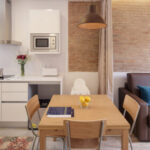 Unforgettable Stay at Hotel Sagrada Familia in Barcelona, Spain
Unforgettable Stay at Hotel Sagrada Familia in Barcelona, Spain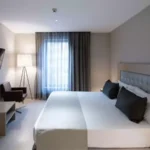 Experience the Charm of Hotel Catalonia Sagrada Familia in Barcelona, Spain
Experience the Charm of Hotel Catalonia Sagrada Familia in Barcelona, SpainIf you want to know other articles similar to The Unfinished Enigma of Sagrada Familia: Barcelona's Architectural Marvel you can visit the category Blog.
Leave a Reply

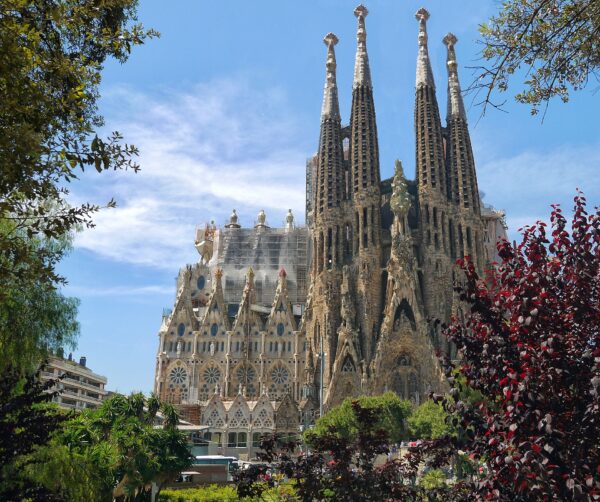
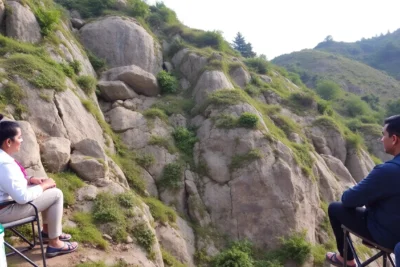
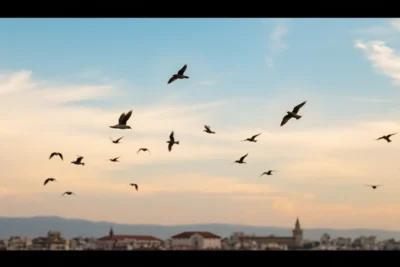



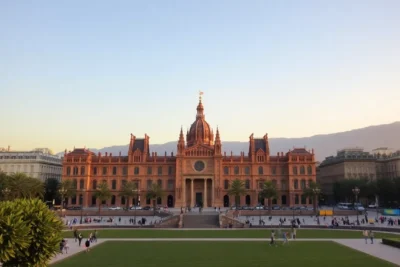

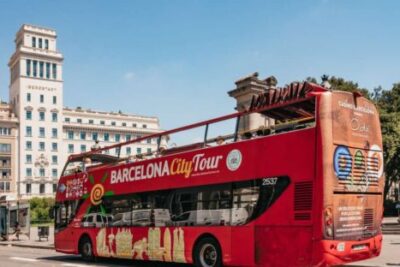
Read more!